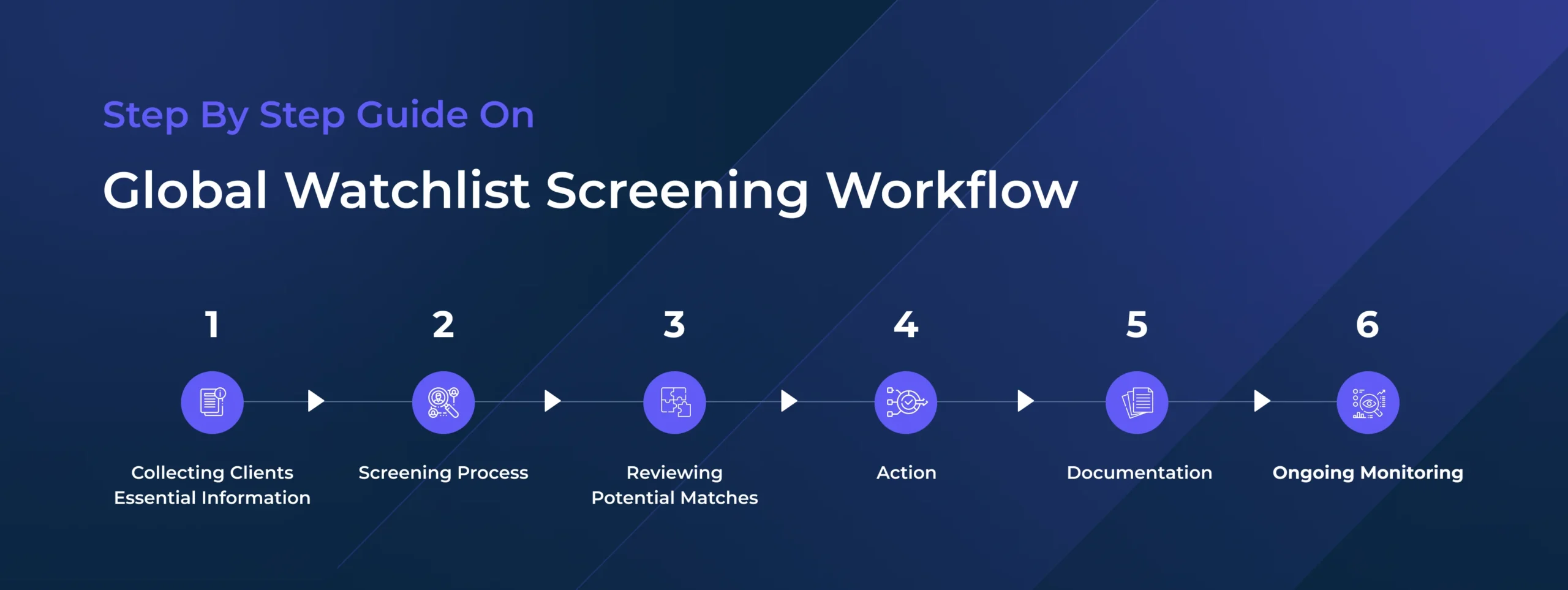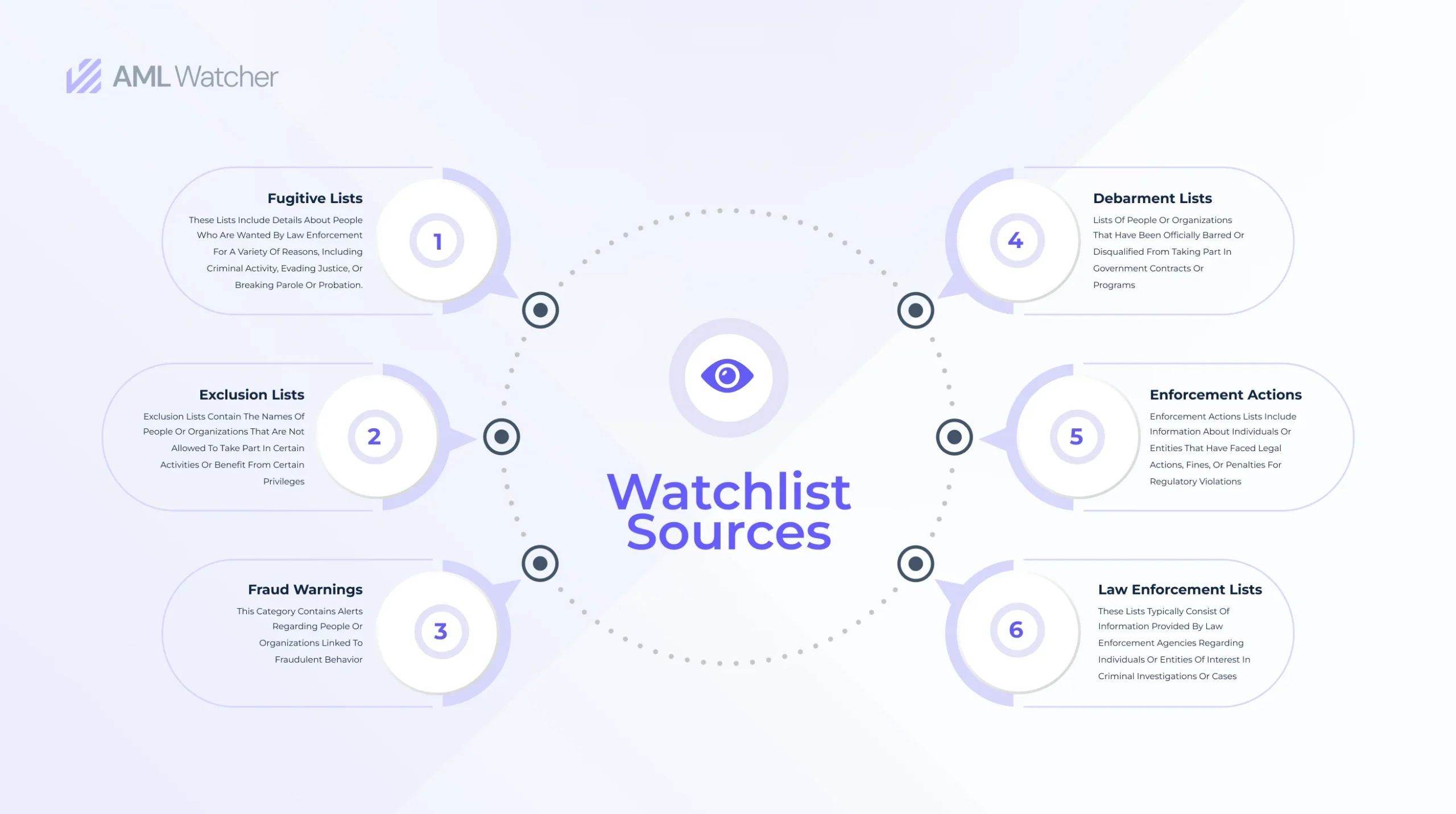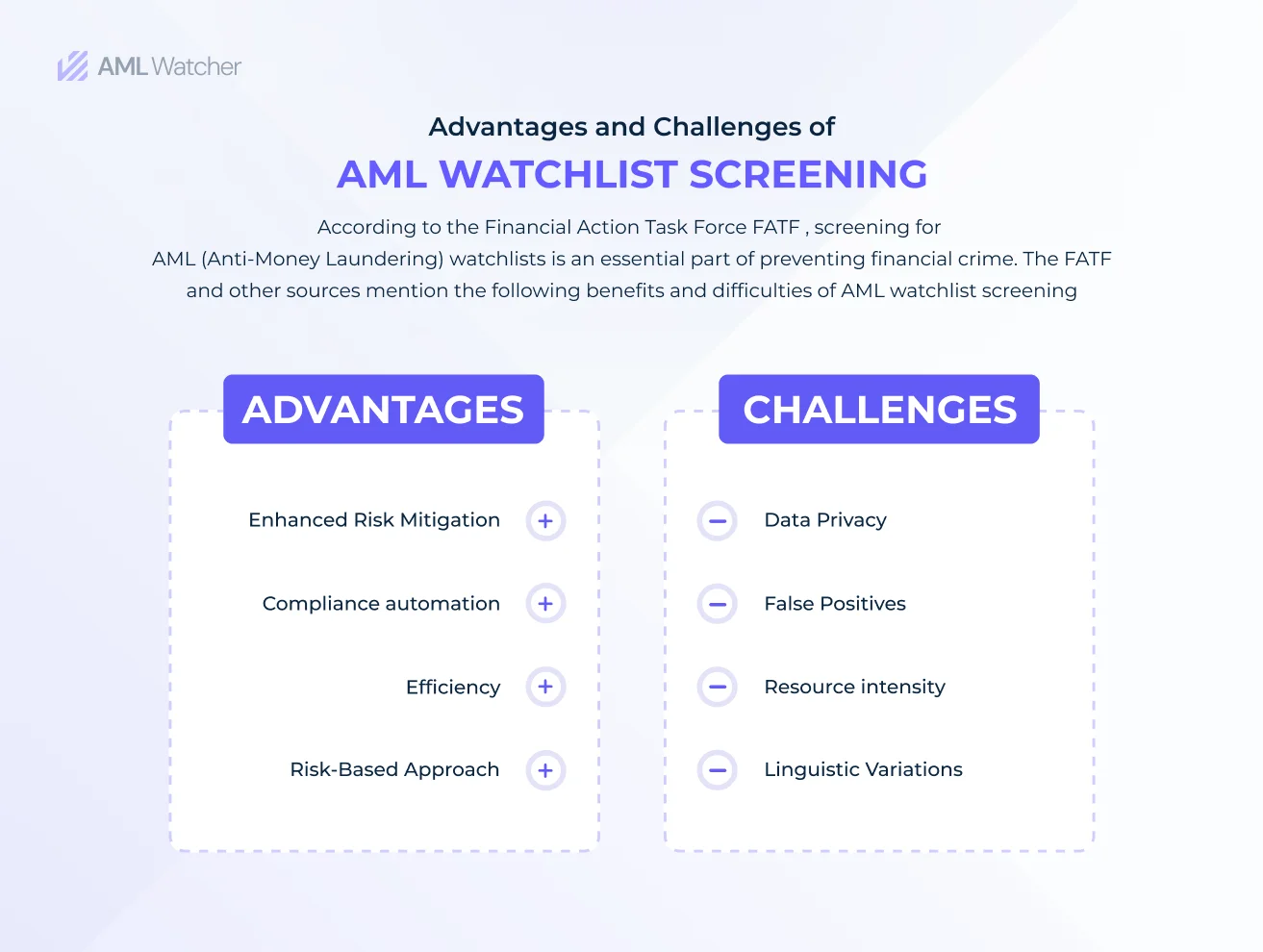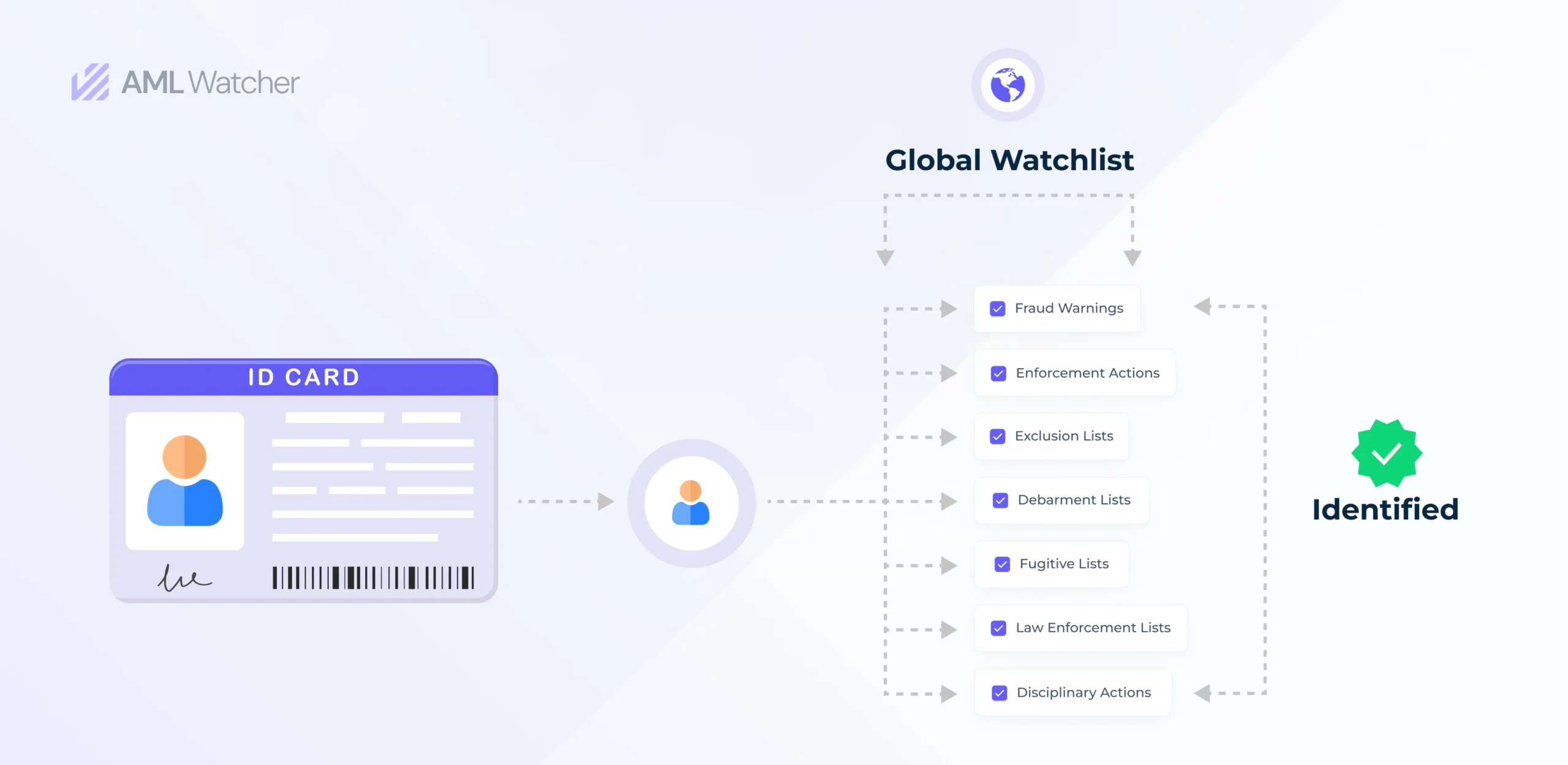
Understanding Watchlists: Your Easy Guide to Safety Checks and Monitoring

What are watchlists?
A watchlist is a list of individuals, entities, or organizations that are considered potentially high-risk or suspicious due to their involvement in illegal activities or connections to sanctioned or prohibited parties. Watchlists are used primarily in the context of Anti-Money Laundering (AML) and financial regulations to help organizations identify and screen for potential money laundering, terrorist financing, or other illicit activities.
Evolution of Watchlists
The evolution of watchlists traces back to the 1970s when the United States (FinCEN) passed the Bank Secrecy Act. These watchlists were initially developed as a directory to record individuals and organizations involved in dubious financial activities. As financial crimes have grown in complexity, the need for strengthening AML protection measures has become increasingly evident.
The Importance of watchlist screening
All jurisdictions have developed extensive AML guidelines inspired by the FATF recommendations. Organizations, particularly financial institutions, must conduct due diligence checks that involve cross-referencing customer data against global watchlists. Failure to execute accurate screening processes can expose organizations to legal penalties, financial losses, and reputational harm. This approach is globally mandated by regulatory bodies to combat money laundering and terrorism financing, making watchlist screening a critical tool for clients and organizations to safeguard against financial crimes.
Exploring the Details: Understanding the Process and Its Sources
How does Global Watchlist Screening work?
Organizations employ global watchlist screening to identify individuals or companies at risk due to involvement in illegal activities. This background check, inclusive of a global blacklist, safeguards national security and an entity’s reputation.
Step by step guide on Global Watchlist Screening workflow
- Collecting Clients Essential Information
- Screening Process
- Reviewing Potential Matches
- Action
- Documentation
- Ongoing Monitoring
To initiate the watchlist screening process, the first step involves defining the organization’s risk profile and screening criteria, specifying who should undergo screening and under what circumstances. Subsequently, gather the requisite personal identifiable information (PII) for the individuals or entities to be screened. Specialized screening software like AML Watcher compares this data against global watchlist databases. Finally, MLROs review the software-generated results to ascertain whether each match is a true positive, indicating a valid watchlist match, or a false positive, signifying an erroneous match. The client risk profile is subsequently updated and the decision is taken in accordance with the company’s risk appetite and configure ongoing monitoring if needed.
Watchlist sources
Global watchlist sources are extensive databases with listings of people, organizations, and entities that have been flagged for their involvement in illicit activities. Organizations tend to maintain compliance by restricting such people or entities that are restricted and protect their reputation on a global scale. These lists are used by corporations and organizations to steer clear of potential risks and unintended involvement in unlawful activity. AML Watcher includes the following lists from all such global databases: –
- Fugitive Lists: These lists include details about people who are wanted by law enforcement for a variety of reasons, including criminal activity, evading justice, or breaking parole or probation.
- Exclusion Lists: Exclusion lists maintained by organizations like the Office of Inspector General (OIG) , contain the names of people or organizations that are not allowed to take part in certain activities or benefit from certain privileges. Regulatory infractions may result in exclusion from government contracts, healthcare programs, or financial services.
- Fraud Warnings: This category contains alerts regarding people or organizations linked to fraudulent behavior. It aids in the identification of possible fraudsters or fraud-related threats for enterprises and authorities.
- Debarment lists: Lists of people or organizations that have been officially barred or disqualified from taking part in government contracts or programs.
- Enforcement Actions: Enforcement actions lists include information about individuals or entities that have faced legal actions, fines, or penalties for regulatory violations. This can include actions taken by regulatory agencies or law enforcement.
- Law Enforcement Lists: These lists typically consist of information provided by law enforcement agencies regarding individuals or entities of interest in criminal investigations or cases. For instance, Interpol Red Notices are requests to law enforcement agencies around the world to find and temporarily detain a suspect pending extradition or other legal proceedings.
Regulatory Enforcements: Consequences of Breaches
Legal, financial, and reputational penalties are possible as a result of regulatory violations. Organizations and people who violate laws and regulations risk receiving hefty fines from regulatory authorities. Individuals guilty of major regulatory violations may be sentenced as a result of their actions. A company’s reputation may suffer significantly from regulatory violations. A decline in public confidence could result in a loss of clients, partners, and investors. Depending on the sector and the type of breach, some regulatory violations might result in the loss of professional certifications or licenses. In some circumstances, a corporation may benefit economically from paying fines for regulatory violations, especially if the penalties are viewed as less expensive than complete compliance. This may lead to moral and legal problems. Organizations must prioritize regulatory compliance in order to apply ongoing high-risk business monitoring and create effective compliance processes to reduce the risks associated with regulatory breaches if they are to avoid severe repercussions.
Fitness and Probity: Maintaining Integrity in Monitoring
Fitness and probity refer to legal requirements and procedures intended to uphold integrity and monitor the behavior of people in influential positions inside regulated businesses, particularly in the financial services industry. This primarily comprises In order to guarantee continuing adherence to these criteria, monitoring is essential. Designing dashboards to track compliance, identify violations, and keep an eye on shifts in employee behavior is part of this.
High-Risk Businesses: An Extra Layer of Caution
In today’s intricate financial ecosystem, diligent risk management is paramount, particularly for sectors inherently classified as high-risk, including gambling, prepaid debit cards, casinos, cannabis/tobacco trade, etc. These industries are susceptible to financial crimes, making it crucial to integrate fraud detection, risk-based monitoring, and stringent Anti-Money Laundering (AML) protocols. High-risk businesses, like online gambling, cryptocurrency exchanges, and money transfer services, are often prime targets for money laundering and fraud. To mitigate these risks, a comprehensive risk management strategy is essential, where AML Watcher’s solutions, encompassing watchlist screening, enable companies to swiftly detect potential matches and take preemptive measures or conduct further due diligence, ultimately safeguarding their business interests.
Advantages and Challenges of AML Watchlist Screening
According to the Financial Action Task Force FATF, screening for AML (Anti-Money Laundering) watchlists screening is an essential part of preventing financial crime. The FATF and other sources mention the following benefits and difficulties of AML watchlist screening:
Advantages:
- Enhance Risk Mitigation – by adopting AML watchlist screening and reducing the chances of getting involved in illicit financial activities.
- Compliance Improvement- by maintaining strong adherence to changing regulations begin operating within legal boundaries.
- Risk-Based Approach – helps assign a score to individuals based on risk associated with their onboarding thus improving resource allocation and process optimization.
Challenges:
- False Positives – jumble the entire screening results with false alerts, driving needless investigations and waste of resources.
- Resource intensity – makes it even more difficult to abide by speed and accuracy goals due to poor training and resource-intensive task allocation.
- Linguistic variations – create a big challenge in dealing with complex name matching, proximal analysis, and phonetic analysis across a wide range of languages, especially Arabic scriptures to find accurate matches.
Manual or Automated Watchlist Monitoring?
Manual monitoring relies on human expertise, allowing only limited use of resources, intelligence, and risk analysis capabilities in catching risks, which could be time-consuming and strenuous task.
In comparison to this, automated watchlist monitoring handles the task with efficiency and prompt response to high-risk alerts, reducing manual errors and strong oversight of risks.
Automated Watchlist Screening is the New Way Forward?
It would not be wrong to say that automated screening is a glimpse of what future screening would look like. Unlike traditional screening which takes a large amount of time and resources to catch risks automation cuts short the time with a cherry on top by providing improved speed and accuracy as well.
AML Watcher is picture picture-perfect tool that fits the description, setting an industry benchmark for the efficiency and effectiveness of AML operations.
Ongoing Monitoring Helps with Staying Updated
Ongoing monitoring, as the name implies, stands for consistent observation of watchlists, and a customer screening process to catch any changes that may appear in the status of customers.
Regularly monitoring customer data not only adds insight into changing status but also helps keep track of changes in risk scores, the need for enhanced due diligence, gaps in case management, and any new SAR, if generated.
This proactive behavior towards catching risks ensures complete compliance with regulations and managerial goals set for the organization.
To make it even more clear, consider the UAE, which requires ongoing monitoring at least once a year after onboarding, ensuring a minimal rate of financial crime and fraud activities.
This vigilant monitoring ensures compliance with regulations and effective risk management. For example, in the UAE, ongoing monitoring is legally required for one year after onboarding a customer to a financial service.
A standout feature of AML Watcher is its ongoing monitoring feature, which rechecks customers’ details by updating watchlists at regular intervals. This proactive approach ensures timely detection and response, enhancing the security and compliance of your operations.
Future Trends
Technological Advancements and the Future of Watchlist Screening
Technological advancements are dictating the best practices of watchlist screening by introducing a new era of precision, efficiency, and security. With its implications, there must be a robust system that deals with the issue of ‘misidentification’, where innocent individuals are mistakenly identified as watchlist targets due to current product limitations and a long awaiting list of MLROs. Keeping these limitations in context, AML Watcher is committed to ensure that our product not only keeps pace with the product advancements but also addresses the industry’s challenges, such as false positives and misidentification.
Enhanced Facial Biometric Technologies
Our product uses an advanced face matching algorithm that guarantees an unmatched level of accuracy by matching the customer’s picture from the identity document with watchlists. Our system is made to recognize and verify with high accuracy, whether it’s distinguishing apart identical twins or seeing subtle changes in facial traits over time.
A significant portion of the issue for many Money Laundering Reporting Officers (MLROs) is not just identifying possible hits but also sorting through numerous false positives that take up valuable time and resources. As our product takes pride in industry-leading accuracy, our Enhanced Facial Biometric Technology only generates real matches. This approach virtually guarantees industry’s first-ever 0% false positives.
How to Choose the Best Watchlist Screening Software Provider?
Selecting the ideal watchlist screening software provider hinges on several pivotal factors. It’s vital to opt for a provider, like AML Watcher, that has real-time integrations with globally dispersed watchlists The sourced data should be from trustworthy origins, regularly updated, and comprehensively cover relevant geographic regions. In order to make sure that the software aligns strictly with regulatory standards, obedience to FATF and EU guidelines is mandatory to keep an edge from legal challenges. AML Watcher makes sure you always have the best options available to you, avoiding the long and tiresome MLRO waiting list, while keeping in mind the difficulties and complexities of watchlist screening. We provide comprehensive AML solutions from a single approachable platform, with enhanced data quality for more precise results.
In conclusion, AML Watcher seamlessly integrates to become the ideal choice for organizations aiming to achieve strong compliance with watchlist screening, thus enhancing security in the global financial arena.
Contact us to begin a journey toward improved compliance, heightened security, and a watchlist screening process free from false positives.
We are here to consult you
Switch to AML Watcher today and reduce your current AML cost by 50% - no questions asked.
- Find right product and pricing for your business
- Get your current solution provider audit & minimise your changeover risk
- Gain expert insights with quick response time to your queries

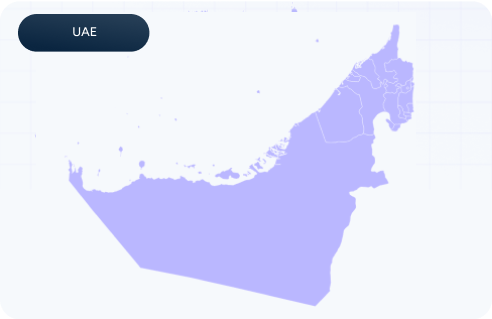 Compliance Guidelines: United Arab Emirates
Compliance Guidelines: United Arab Emirates
 Compliance Guidelines: Germany
Compliance Guidelines: Germany
 UK to Launch World’s First Sanctions Regime to Target Upstream People Smuggling
UK to Launch World’s First Sanctions Regime to Target Upstream People Smuggling
 Utah Lawsuit Alleges TikTok Livestreams Facilitated Money Laundering Activities
Utah Lawsuit Alleges TikTok Livestreams Facilitated Money Laundering Activities

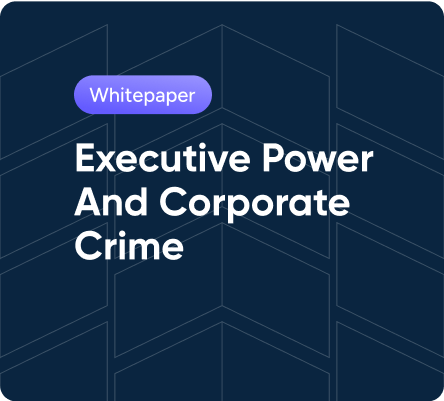
 Why Should states conduct AML Due Diligence for CBI/RBI Investment Schemes?
Why Should states conduct AML Due Diligence for CBI/RBI Investment Schemes?
 How can businesses comply with US sanctions on vessels?
How can businesses comply with US sanctions on vessels?
 Difference In AML: DNFBPs Vs Financial Sector
Difference In AML: DNFBPs Vs Financial Sector
 Difference in EU and US Sanctions Programs - How It Impacts Compliance?
Difference in EU and US Sanctions Programs - How It Impacts Compliance?
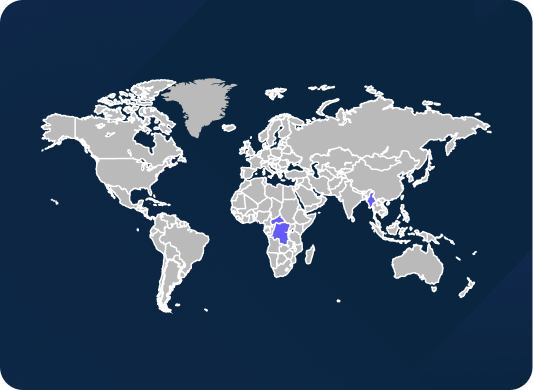 How Regulatory Gaps Fueling Money Laundering in High Risk Jurisdictions?
How Regulatory Gaps Fueling Money Laundering in High Risk Jurisdictions?
 Mapping Anti-Money Laundering Regulations in Malaysia
Mapping Anti-Money Laundering Regulations in Malaysia

